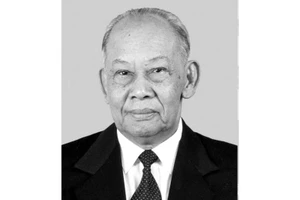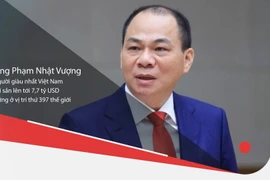Hanoi (VNA) – Since Vietnam and India established a comprehensive strategic partnership in 2016, two-way trade has increased 2.5fold to nearly 15 billion USD in 2023, while there remain great potential for investment and trade cooperation between the two countries.
According to experts, trade cooperation is an important pillar in the Vietnam-India relations with impressive achievements.
A representative of the Ministry of Industry and Trade (MoIT) said that India is currently Vietnam's leading economic partner in the South Asian region and the 8th largest trading partner in the world. Notably, trade with India accounts for about 80% of Vietnam's total trade turnover with South Asian countries, which has grown significantly.
The annual growth of Vietnam-India trade turnover expanded 17.3% in the 2011-2016 period and 12% in the 2017-2023 period. In the first half of 2024, the figure rose by 2% year on year to 7.18 billion USD.
Vietnam's main exports to India include computers and electronics, mobile phones and accessories, machinery and equipment, steel and other metals, chemicals, footwear, garments, rubber, and wood products. Meanwhile, Vietnam imports from India technical products, agricultural products, chemicals and pharmaceuticals, electronics, minerals, cotton and textiles, and plastics.
India consumed 50% of Vietnam’s total star anise export volume. In the 2022-2023 fiscal year, Vietnam supplied 32,650 tonnes of cinnamon to India, accounting for 80% of India’s total imports of this product.
India is Vietnam's fourth largest pepper market, consuming 6,813 tonnes worth 28 million USD, up 46.5% in volume and 90.6% in value.
In particular, with a large population, India has a huge market demand for cinnamon, star anise, and medicinal herbs.
According to the MoIT, trade between the two countries has yet to match the potential of the two sides.
The International Monetary Fund (IMF) forecast that Vietnam's GDP will expand nearly 6% in 2024. The good economic growth and macroeconomic stability are extremely important factors in attracting investment, facilitating production and business activities of Vietnamese and Indian enterprises.
In addition, Vietnam and India have launched direct flights between Hanoi, Ho Chi Minh City, Da Nang city and many Indian cities such as New Delhi and Mumbai with a frequency of nearly 50 flights per week, making it easier for people and businesses of Vietnam and India to travel to each other’s country.
However, the exports to India currently account for only 2.1% of Vietnam’s total exports to the world, while imports from India make up only 1.97% of the Southeast Asian country's total.
The MoIT advised businesses to increase the exports of processed fruits, fresh fruits, tea coffee, spices, cereals and nuts, and tra fish to India, and recommended Indian firms to supply more raw materials for textiles, footwear, components and spare parts for the mobile phone, electronics and mechanical manufacturing industries of Vietnam.
Nguyen Thi Thu Hien, Vice Chairwoman of the Indian Importers Chambers of Commerce and Industry (IICCI), held that in order to conquer the giant market of India, businesses should pay more attention to building trust and a long-term positive relationship with Indian partners./.

See more
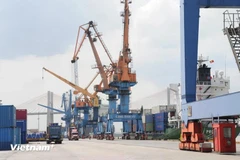
Businesses need to respond flexibly to minimise impact of US new tariffs: insiders
Businesses should proactively diversify their export markets in order to prepare for unexpected events in the context where there is a trend of trade liberalisation, alongside a rise in protectionist measures, and increased technical and trade barriers in major markets.

Lumitel – A bright spot in Vietnam-Burundi collaboration
After a decade of operations, Lumitel has become the leading telecommunications provider in Burundi and one of the largest contributors to the Burundian government's budget, providing stable employment for over 60,000 workers and indirectly creating around 100,000 jobs.
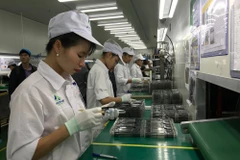
Vietnam’s trade shines as a pillar of economic growth
This robust performance, representing an additional 12 billion USD compared to the same period last year, underscores trade's resilience amid global economic uncertainties.
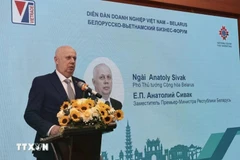
Ample room remains for Vietnam - Belarus trade cooperation
To further develop the Vietnam-Belarus economic and trade relationship, it is essential to enhance trade promotion and investment initiatives such as trade fairs, forums, thematic workshops, and trade connections, which serve as an important bridge for businesses from both sides to meet, connect, and seek cooperation opportunities.
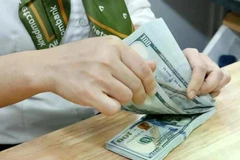
Reference exchange rate up 3 VND on April 3
The State Bank of Vietnam set the daily reference exchange rate for the US dollar at 24,854 VND/USD on April 3, up 3 VND from the previous day.

Vietnam, Laos boost trade at Savannakhet expo
Vice Governor of Savannakhet Saensak Soulisak highlighted the exhibition’s role in expanding trade collaboration, enabling businesses to connect, share experience, and explore investment prospects. He also noted its significance in promoting local products to a wider market.
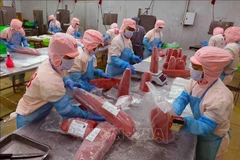
Vietnam’s seafood exports surge to 2.45 billion USD in Q1
Industry insiders pointed to stable raw material prices and a strategic shift towards higher-value processed products as key factors underpinning the strong performance of the two top earners -shrimp and tra fish.
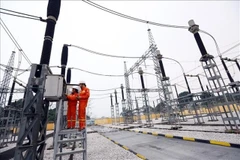
Vietnam sets new framework for retail electricity pricing
The decision, signed on March 31, sets the maximum retail electricity price at 2,444.09 VND per kWh (0,095 USD), while the minimum price is set at 1,826.22 VND per kWh.
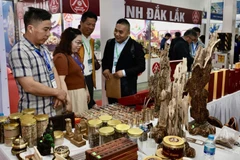
Vietnam Expo 2025 opens, spotlighting digital transformation, innovation
This year’s edition, themed “Step together in a digitised world,” has attracted around 400 businesses from 18 countries and territories, with over 500 booths. Alongside traditional networking, it introduces online business-to-business (B2B) matching, enabling year-round connections.
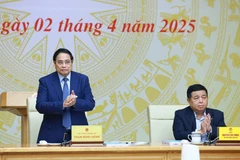
Private sector encouraged to join major national programmes, projects
It must fully unleash the productive capacity and resources of the country through the private sector; mobilise all private resources for national development; harness the effectiveness of internal forces, including human, natural resources, history, and culture, while effectively combining them with external resources such as capital, technology, human resources, and management experience, he said.

Annual Vietnam-Cambodia business dialogue held in Cambodia
The annual business dialogue in Cambodia attracted around 150 delegates, including Vietnamese businesses and Vietnamese-origin companies operating in Cambodia across various sectors such as finance, banking, insurance, telecommunications, agriculture, construction, interior design, food services, transportation, logistics, trade, healthcare, and tourism.
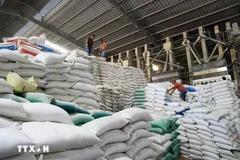
Vietnam-Cuba Business Forum held in Hanoi
Addressing the event, Cuban Ambassador Rogelio Polanco Fuentes affirmed that Cuba will always stand alongside the Vietnamese Government and business community in their efforts to achieve the challenging target socio-economic goals.
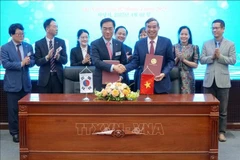
Da Nang, RoK's Pyeongtaek partner in semiconductors, high technology
By the end of 2024, the RoK had invested in 285 projects in Da Nang, with a total registered capital of 382 million USD, ranking among the top five foreign investors in the city.
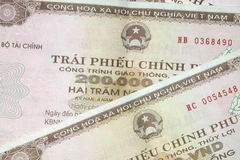
Over 2.54 bln USD raised through government bond auctions
These auctions raised an impressive 65.3 trillion VND (over 2.5 billion USD), an 124% increase compared to February, signaling strong investor confidence in the country's financial stability.
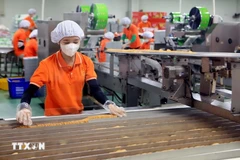
Party official anticipates breakthroughs in private economic sector
With the Politburo set to issue a dedicated resolution on the private economic sector, there should be a reformed approach to action plans, according to Secretary of the Party Central Committee and head of Head of its Commission for Policies and Strategies Tran Luu Quang.

More RoK’s game developers target Vietnam
Over half of Vietnam's nearly 100 million population being gamers and the country's competitive labour costs are among reasons for Korean gaming firms' expanding presence in Vietnam.
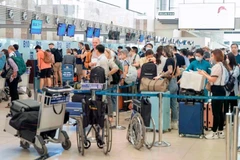
Airfares surge ahead of April 30 - May 1 holidays
To regulate the market, the CAAV has taken measures to balance supply and demand on domestic routes and support airlines in enhancing their operational capacity.
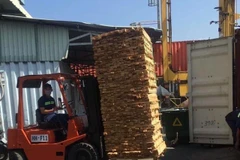
Vietnam cuts import taxes on key goods ahead of US tariff announcement
The quick response from Vietnam has won approval from industry leaders, with some considering the tax cuts as a "swift, positive, and timely" move that showcases Vietnam’s goodwill.

Vietnam Airlines marks 10 years of UK route operations
Vietnam Airlines launched its direct UK route in 2011, initially operating from London Gatwick Airport (LGW) before transitioning to Heathrow in 2015, improving connectivity to one of the UK’s major international hubs./.
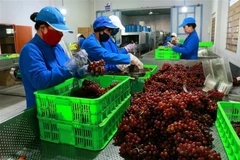
Vietnamese firms embrace green, digital export strategy to meet global standards
Nguyen Dinh Tung, CEO of Vina T&T Import Export Service Trading Co. Ltd., stressed that tougher technical barriers in global markets are creating a level playing field, compelling exporters to prioritise quality and compliance.



